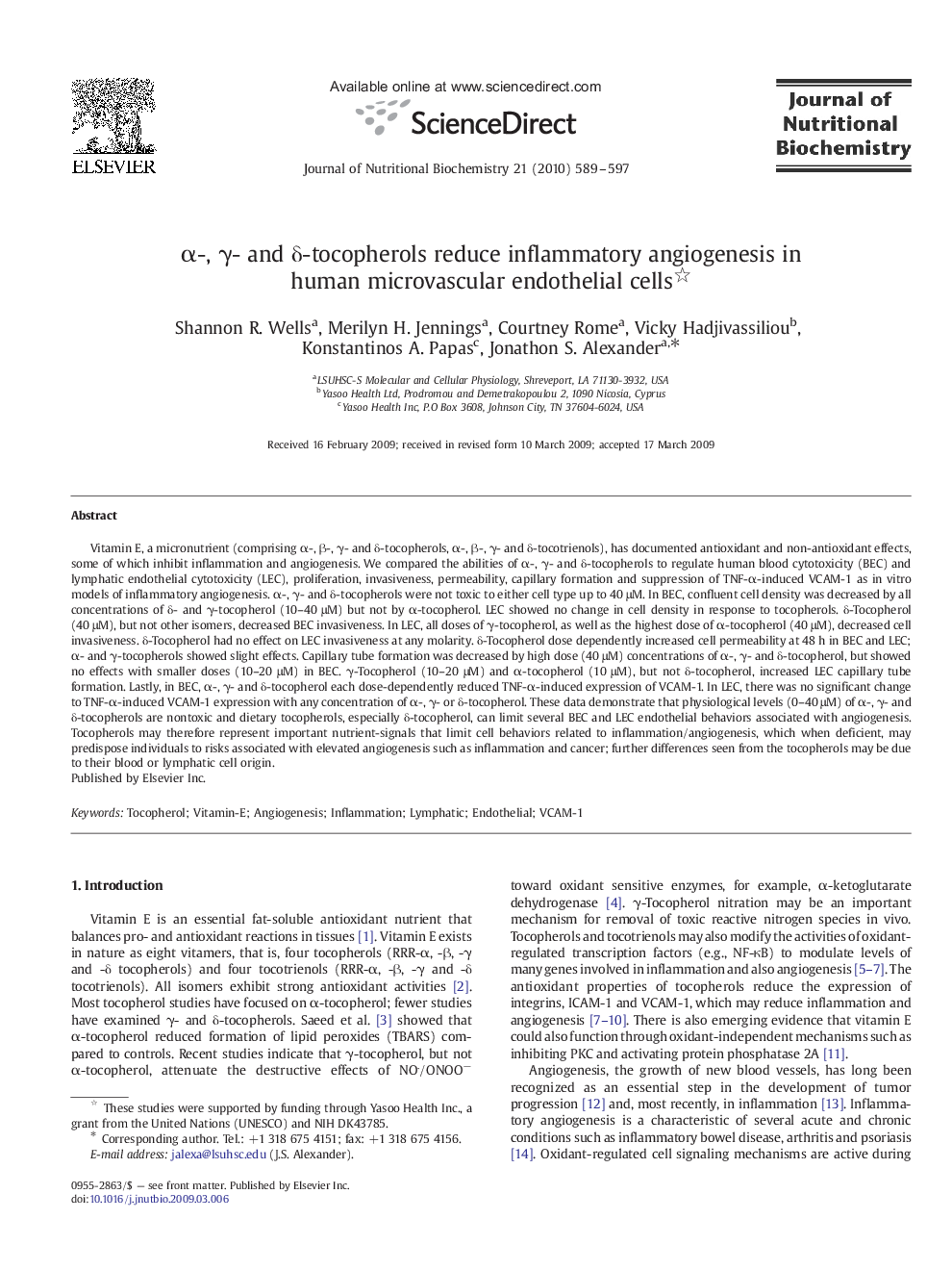| Article ID | Journal | Published Year | Pages | File Type |
|---|---|---|---|---|
| 1990171 | The Journal of Nutritional Biochemistry | 2010 | 9 Pages |
Abstract
Vitamin E, a micronutrient (comprising α-, β-, γ- and δ-tocopherols, α-, β-, γ- and δ-tocotrienols), has documented antioxidant and non-antioxidant effects, some of which inhibit inflammation and angiogenesis. We compared the abilities of α-, γ- and δ-tocopherols to regulate human blood cytotoxicity (BEC) and lymphatic endothelial cytotoxicity (LEC), proliferation, invasiveness, permeability, capillary formation and suppression of TNF-α-induced VCAM-1 as in vitro models of inflammatory angiogenesis. α-, γ- and δ-tocopherols were not toxic to either cell type up to 40 μM. In BEC, confluent cell density was decreased by all concentrations of δ- and γ-tocopherol (10-40 μM) but not by α-tocopherol. LEC showed no change in cell density in response to tocopherols. δ-Tocopherol (40 μM), but not other isomers, decreased BEC invasiveness. In LEC, all doses of γ-tocopherol, as well as the highest dose of α-tocopherol (40 μM), decreased cell invasiveness. δ-Tocopherol had no effect on LEC invasiveness at any molarity. δ-Tocopherol dose dependently increased cell permeability at 48 h in BEC and LEC; α- and γ-tocopherols showed slight effects. Capillary tube formation was decreased by high dose (40 μM) concentrations of α-, γ- and δ-tocopherol, but showed no effects with smaller doses (10-20 μM) in BEC. γ-Tocopherol (10-20 μM) and α-tocopherol (10 μM), but not δ-tocopherol, increased LEC capillary tube formation. Lastly, in BEC, α-, γ- and δ-tocopherol each dose-dependently reduced TNF-α-induced expression of VCAM-1. In LEC, there was no significant change to TNF-α-induced VCAM-1 expression with any concentration of α-, γ- or δ-tocopherol. These data demonstrate that physiological levels (0-40 μM) of α-, γ- and δ-tocopherols are nontoxic and dietary tocopherols, especially δ-tocopherol, can limit several BEC and LEC endothelial behaviors associated with angiogenesis. Tocopherols may therefore represent important nutrient-signals that limit cell behaviors related to inflammation/angiogenesis, which when deficient, may predispose individuals to risks associated with elevated angiogenesis such as inflammation and cancer; further differences seen from the tocopherols may be due to their blood or lymphatic cell origin.
Related Topics
Life Sciences
Biochemistry, Genetics and Molecular Biology
Biochemistry
Authors
Shannon R. Wells, Merilyn H. Jennings, Courtney Rome, Vicky Hadjivassiliou, Konstantinos A. Papas, Jonathon S. Alexander,
